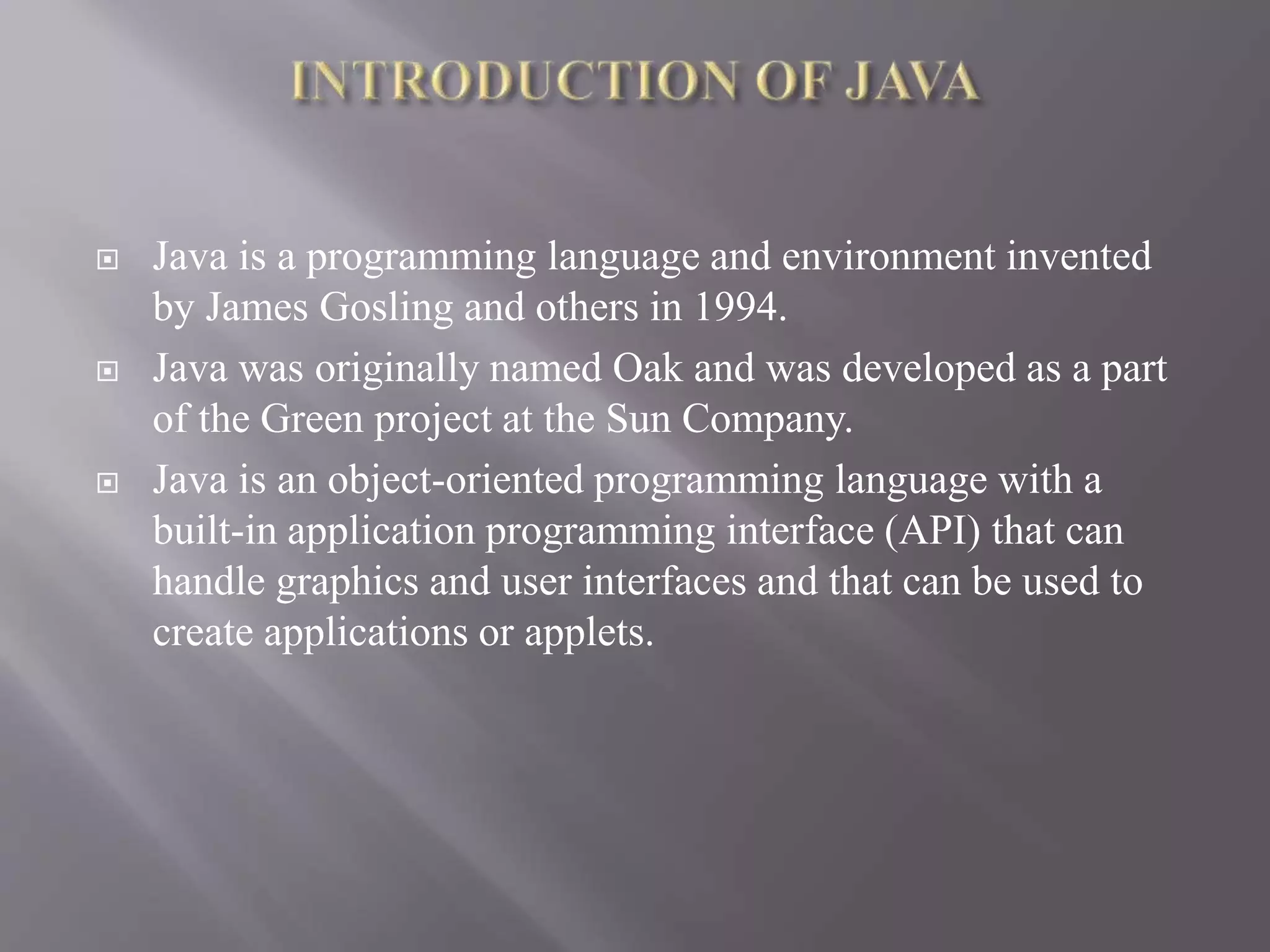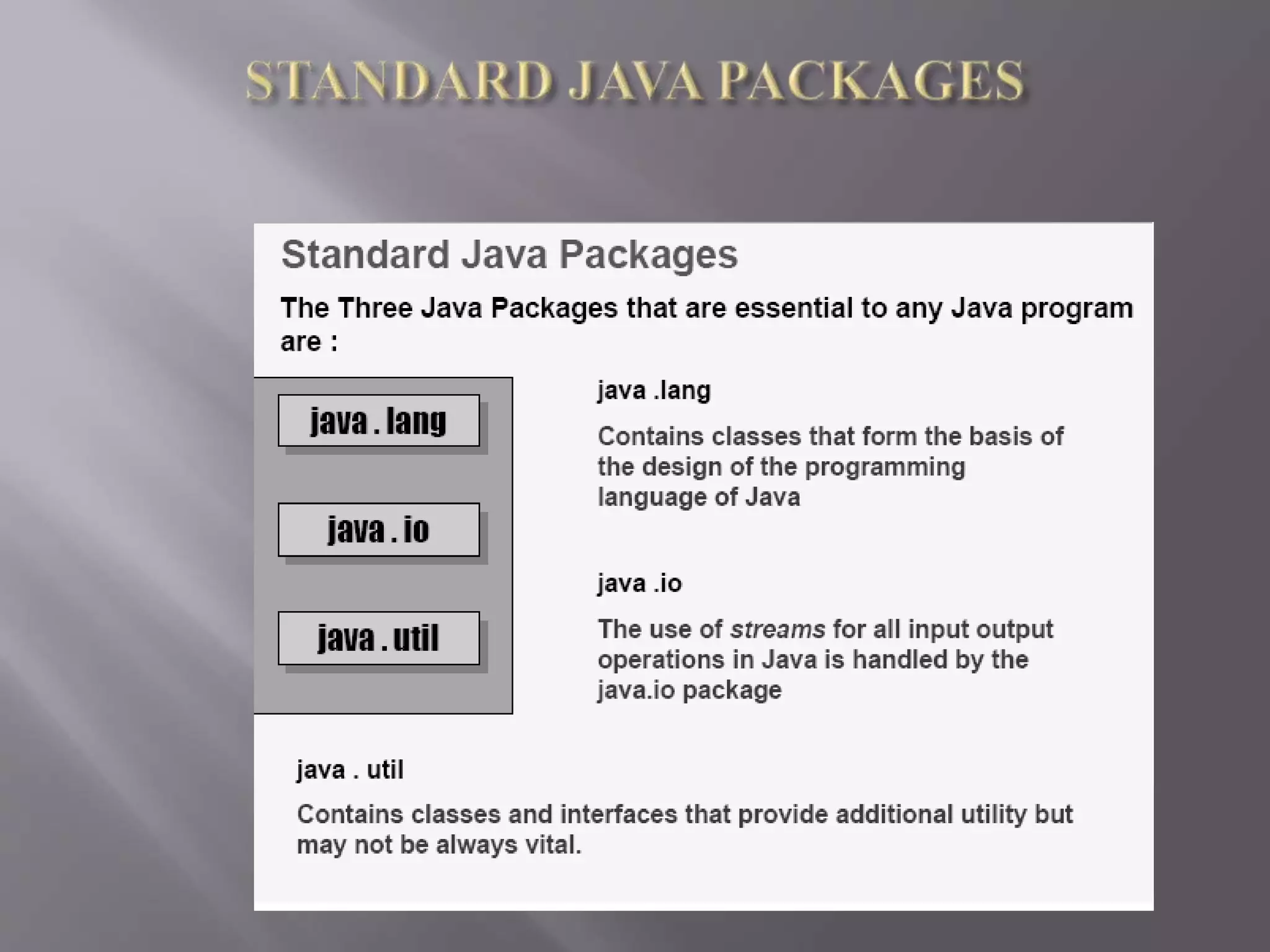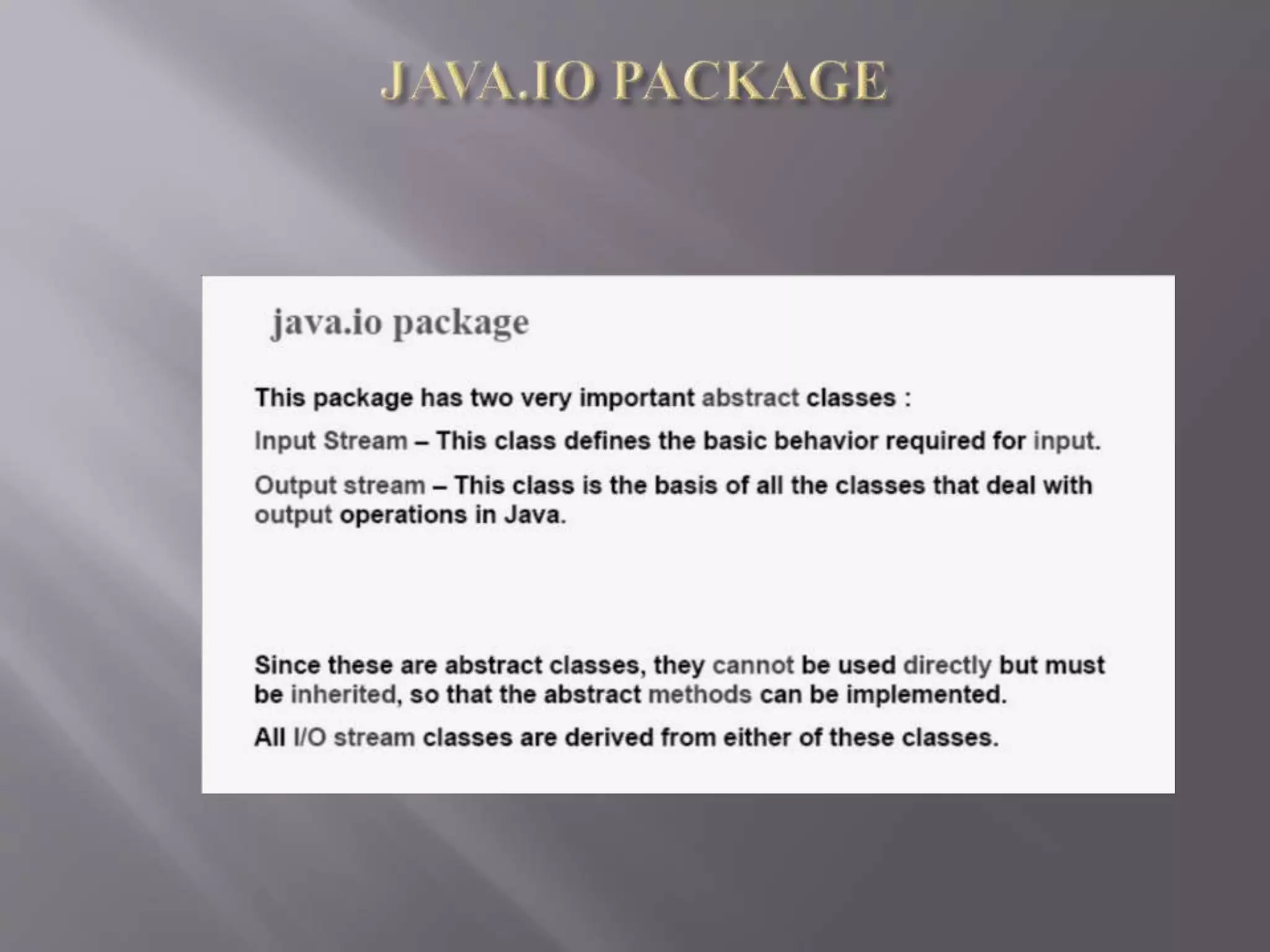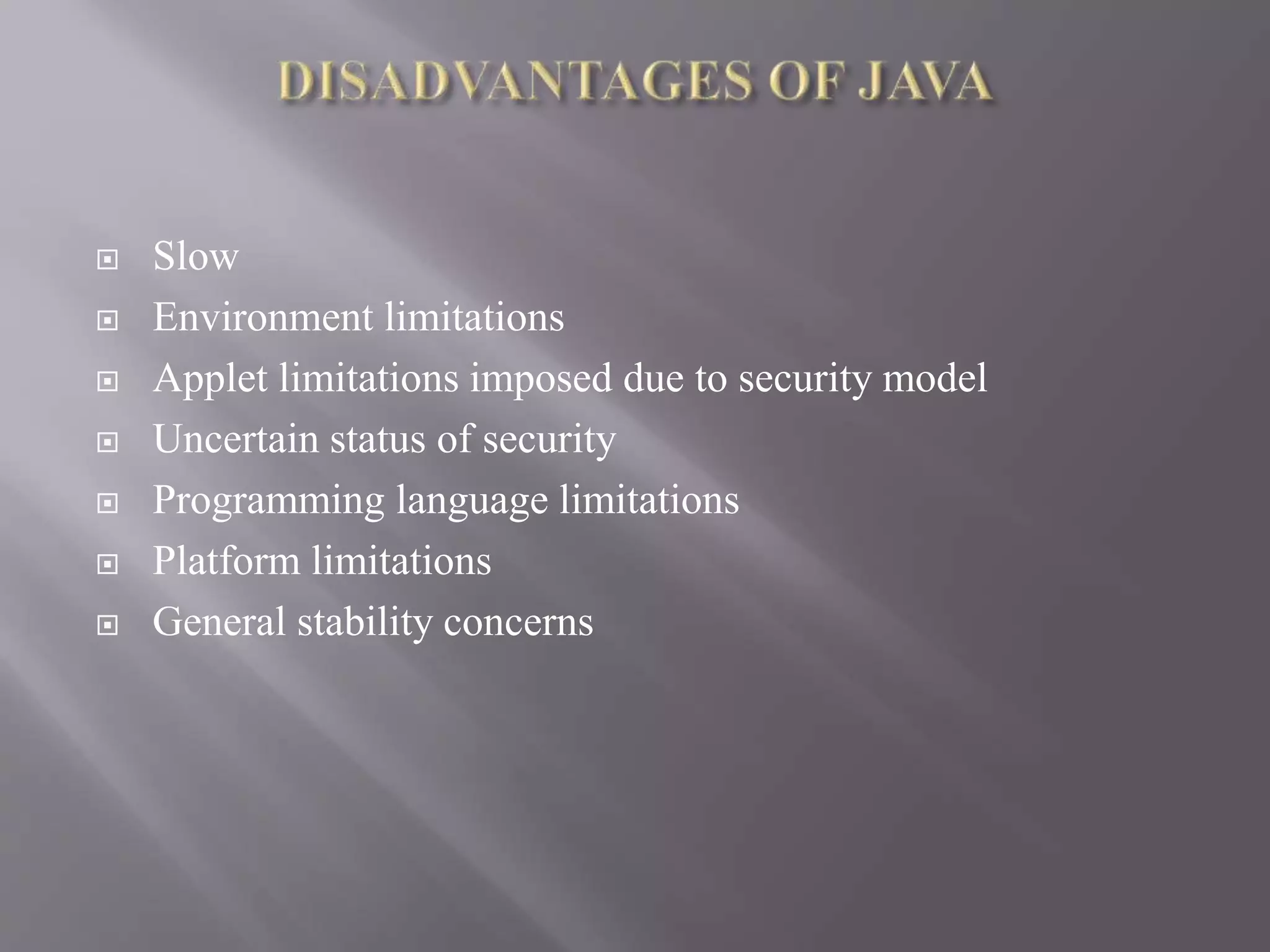The document summarizes a summer training presentation on Java. It introduces Java and its key features like platform independence, encapsulation, and being distributed. It describes Java packages and standard Java packages. It discusses creating packages and the java.lang and java.io packages. The document lists advantages of Java like being easy to learn and object-oriented, and disadvantages like being slow. It concludes that Java offers type safety but needs more expressive power.













